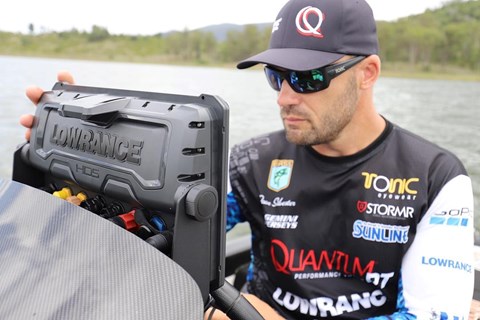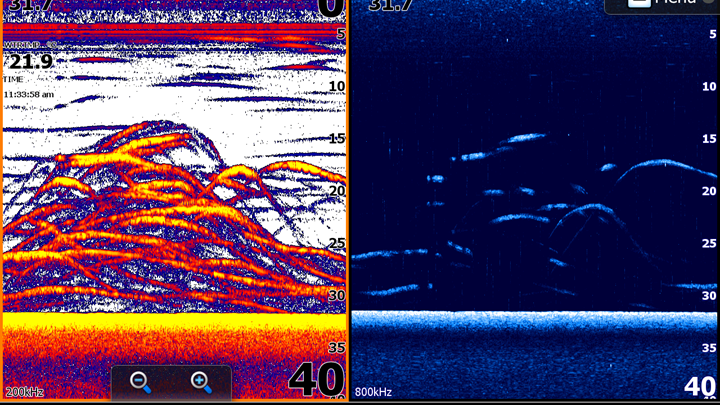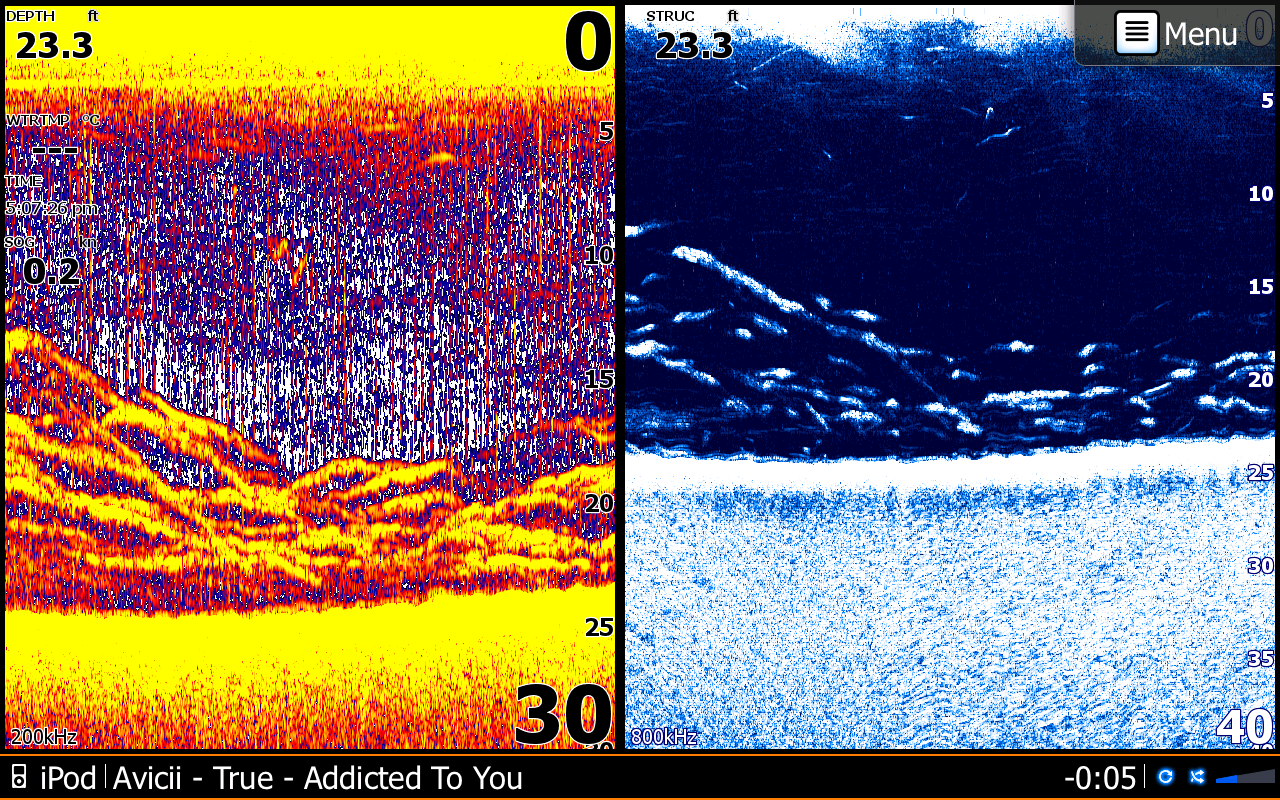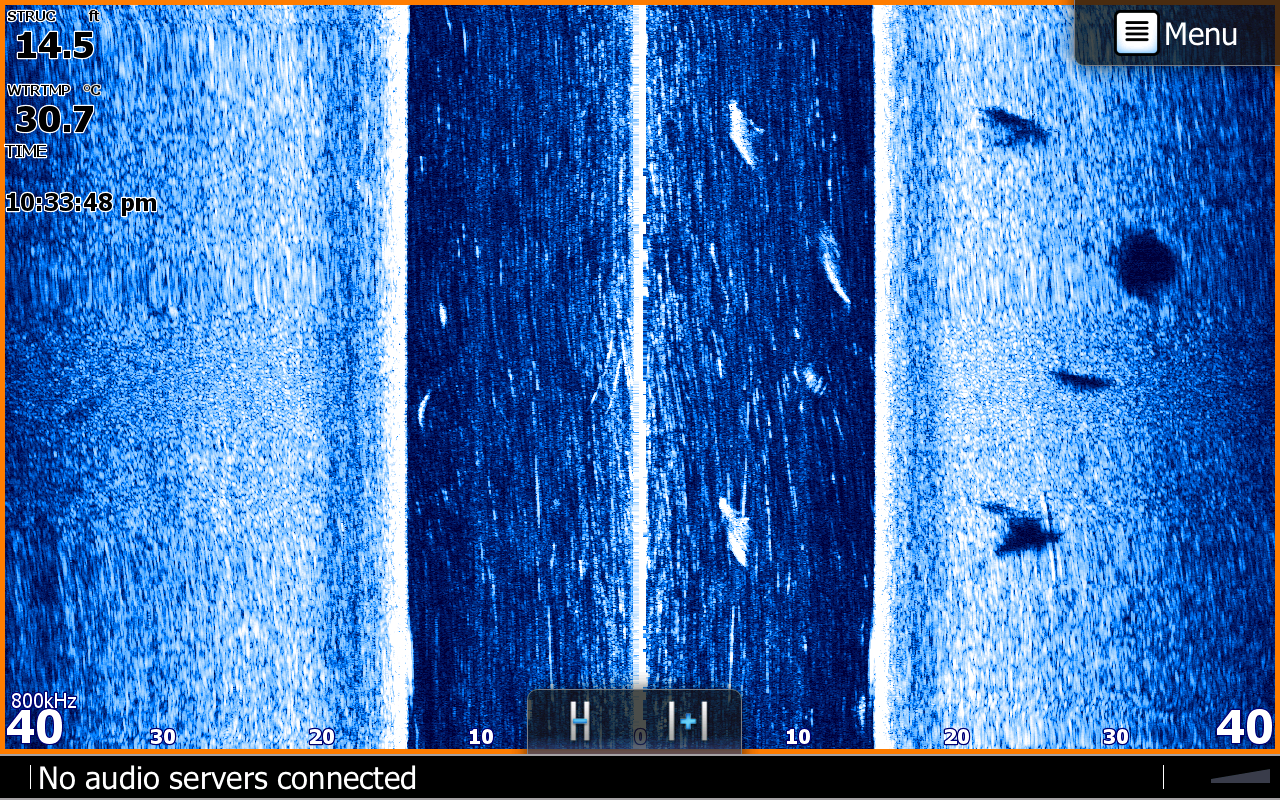There are two types of transducers to run with your sounder: standard sonar and StructureScan. I often get asked which one is better than the other. I run both as there are reasons for requiring both types of information at certain times.
I run an 83/200 transducer for my standard sonar. I like to have it set on 200 with the auto sensitivity at plus 2 depending on the water clarity, oxygen levels and a few other factors. This is my searching tool, I use this with a fairly quick idle speed on my boat utilising a split screen with Insight Genesis map and the standard sonar screen idling around the drop offs and points searching for fish, bait schools or structure.
Once I locate an area of interest, I will slow down and cover the area to work out what is holding in the vicinity. Once fish is located, I use the standard sonar to help me understand the mood of the fish as well as amount and I am often able to tell the quality. The denser the yellow in the centre of the fish the bigger the fish typically are, if you have one, two or three fish actively moving around in a range of 3 – 5 feet you know they are catchable. If there are a lot more lines and they are fairly horizontal and grouped tightly it is fair to assume they are shut down.





















